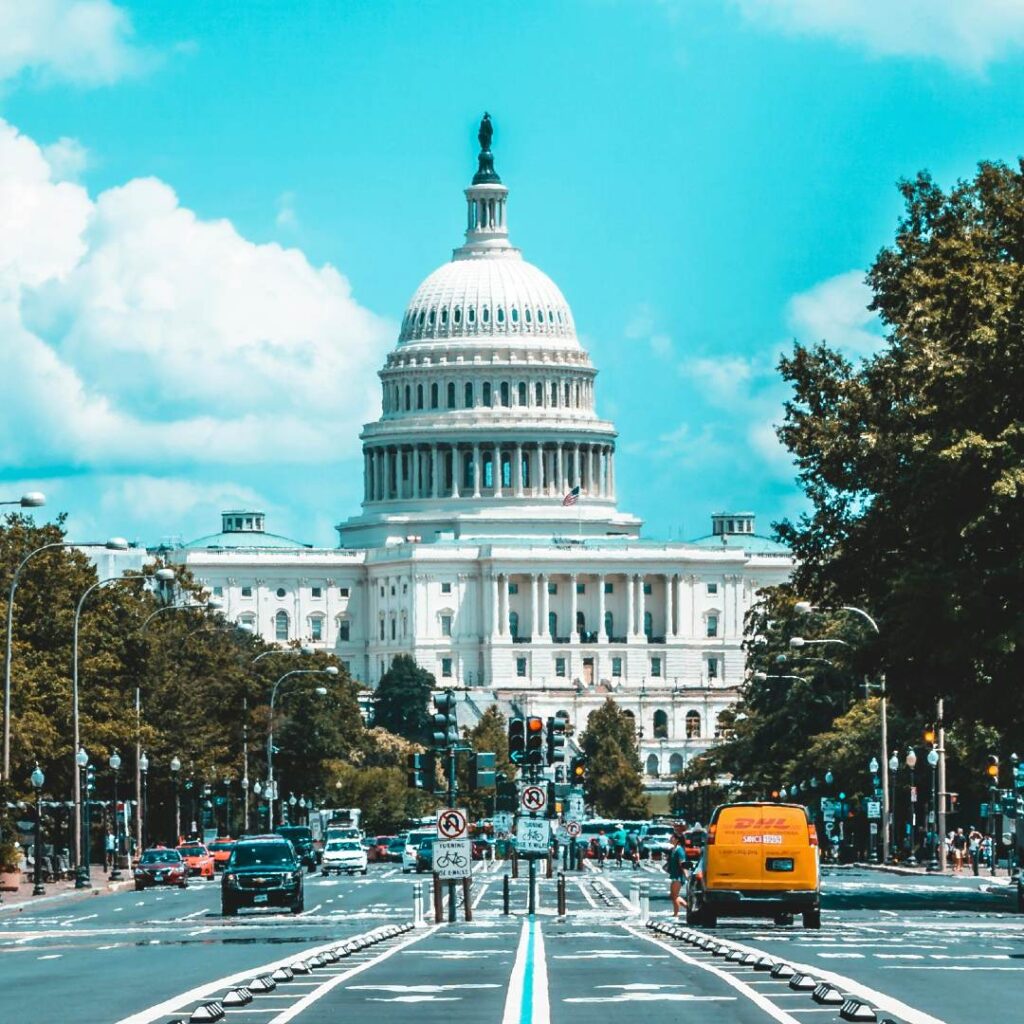
Here’s a list of 12 political parties in the United States along with their main platforms. The first two are the two main parties in alphabetical order. The other parties are in no particular order (okay, they are mostly in the order ChatGPT gave to me).
1. Democratic Party (https://democrats.org)
- Supports social liberalism and progressivism.
- Advocates for policies such as universal healthcare, LGBTQ+ rights, environmental protection, gun control, immigration reform, and income inequality reduction.
- Generally leans towards a larger role for government in addressing social and economic issues.
2. Republican Party (https://www.gop.com)
- Emphasizes conservatism and classical liberalism.
- Supports limited government intervention in the economy, individual liberties, free-market principles, and lower taxes.
- Typically advocates for strong national defense, traditional values, deregulation, and stricter immigration policies.
3. Independent Party (no official website?)
- Represents a diverse range of views and often focuses on individual candidates rather than a unified platform.
- May include centrists, moderates, or individuals dissatisfied with the two-party system.
- Positions can vary widely depending on the specific candidate or issue.
4. Libertarian Party (https://www.lp.org)
- Advocates for maximizing individual freedom and minimizing government intervention in both social and economic spheres.
- Supports free-market capitalism, limited government, civil liberties, and non-interventionist foreign policy.
- Often favors the abolition of government programs and regulations deemed unnecessary.
5. Green Party (https://www.gp.org)
- Focuses on environmentalism, social justice, and nonviolence.
- Advocates for aggressive action on climate change, renewable energy initiatives, social welfare programs, and progressive taxation.
- Often promotes grassroots democracy and participatory decision-making processes.
6. Constitution Party (https://www.constitutionparty.com)
- Stresses adherence to the original intent of the U.S. Constitution and Christian principles.
- Advocates for limited government, states’ rights, traditional moral values, and strict adherence to the Constitution.
- Often opposes federal involvement in areas such as education, healthcare, and welfare.
7. Socialist Party USA (https://www.socialistpartyusa.net)
- Advocates for democratic socialism, worker-owned cooperatives, and wealth redistribution.
- Supports universal healthcare, free higher education, progressive taxation, and comprehensive workers’ rights.
- Often focuses on reducing income inequality and challenging corporate influence in politics.
8. American Solidarity Party (https://solidarity-party.org)
- Emphasizes a “consistent life ethic” that opposes abortion, euthanasia, and capital punishment.
- Advocates for social justice, environmental stewardship, and economic distribution.
- Supports policies aimed at promoting the common good and protecting vulnerable populations.
9. Reform Party (https://reformparty.org)
- Stresses government reform and anti-corruption measures.
- Supports term limits, campaign finance reform, and a balanced budget.
- Focuses on political accountability and transparency.
10. Justice Party (https://www.justicepartyusa.org)
- Advocates for social justice, economic democracy, and environmental sustainability.
- Supports campaign finance reform, universal healthcare, progressive taxation, and corporate accountability.
- Often focuses on addressing income inequality and promoting peace and diplomacy in foreign policy.
11. Working Families Party (https://workingfamilies.org)
- Focuses on economic and social justice issues.
- Advocates for fair wages, workers’ rights, healthcare reform, and progressive taxation.
- Often supports Democratic candidates who align with its platform.
12. Peace and Freedom Party (http://www.peaceandfreedom.org)
- Emphasizes peace, social justice, and socialism.
- Advocates for civil liberties, environmental protection, and non-interventionist foreign policy.
- Often supports third-party candidates and protests against war and inequality.
By the Numbers
A Gallup Poll has been tracking trends in political party affiliation since 2004. The poll consists of a telephone call to more than 10,000 U.S. adults.
Gallup asks Americans whether they identify politically as a Republican, a Democrat or an independent. Independents are then asked a follow-up question about whether they “lean” more toward the Democratic Party or the Republican Party. The combined measure of partisan identification and leanings gives an indication of party strength in the U.S. population.
Source: “U.S. Party Preferences Evenly Split in 2022 After Shift to GOP” via Gallup
Based on this description, I would interpret “independent” as a party other than Democrat or Republican. Here are the results as of February 2024:
- Democrats: 30%
- Republicans: 28%
- Independents: 42%
Of the Independents, 45% lean Republican and 46% lean Democrat.
There is also a spectrum of political leanings within the Democrat or Republican parties (or any party). For instance, in another Gallup poll from 2021, half of the people who identified as Democrats stated that they were “liberal” while the other half stated that they were either moderate or conservative. For the Republicans, 74% stated they were “conservative” and 26% said they were either moderate or liberal.
While the precise numbers may fluctuate over time, the point is that there is a wide variety of political preferences.
Why this matters: Polarization
Reading the news, it seems like there is a great divide between staunch conservatives and liberals. It can feel pretty hopeless.
But the reality is that most people are not up in arms politically. Most people are somewhere in the middle of the edges of the political spectrum.
The problem with being in the middle is that you can be overlooked — you’re like the middle child of the political world. Being in the middle does not get clicks to your news article or opinion piece. The middle doesn’t incite the outrage that makes you want to share the crazy news with your friends. “Hey, friend! Can you believe this?! So-and-so is calling for a balanced and pragmatic approach to addressing this issue! Unbelievable!”
This also means that the unfortunate reality is that the political extremes get all the attention — and that attention is packed with vitriol to the point that it takes a unique person to get involved. And by “unique,” I mean either crazy or valiant, and I’m not sure which one; maybe a bit of both.
Probably what needs to happen is that the middle needs to get more vocal. We need to get more people involved who are in the middle. We need less partisan politics and more people who are willing and able to find balance competing views and political preferences.
Chances are you are somewhere in the middle. Most people are. If that’s you, you are in good company.



